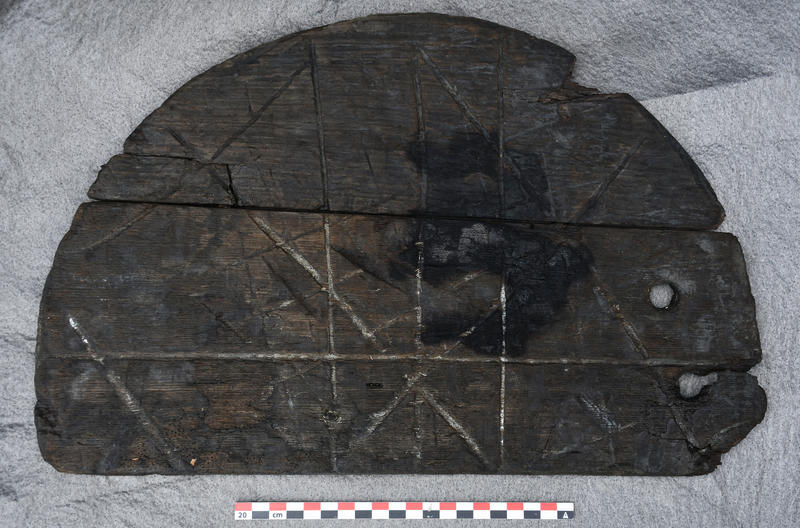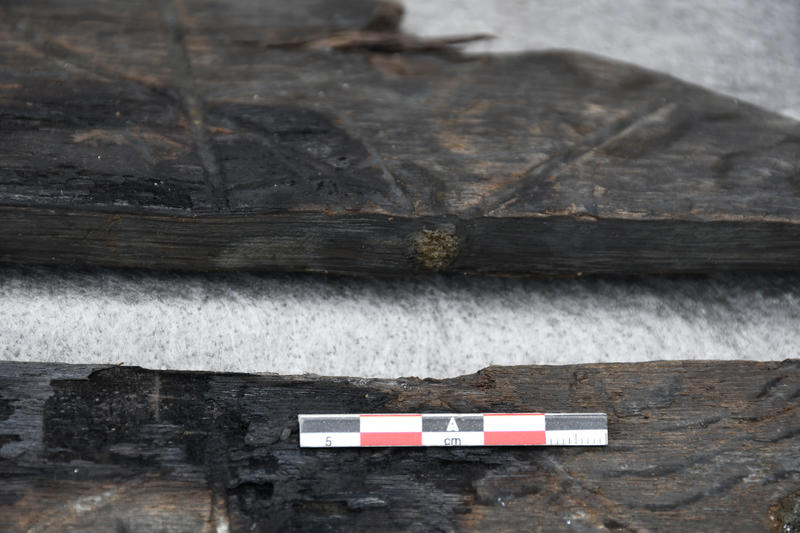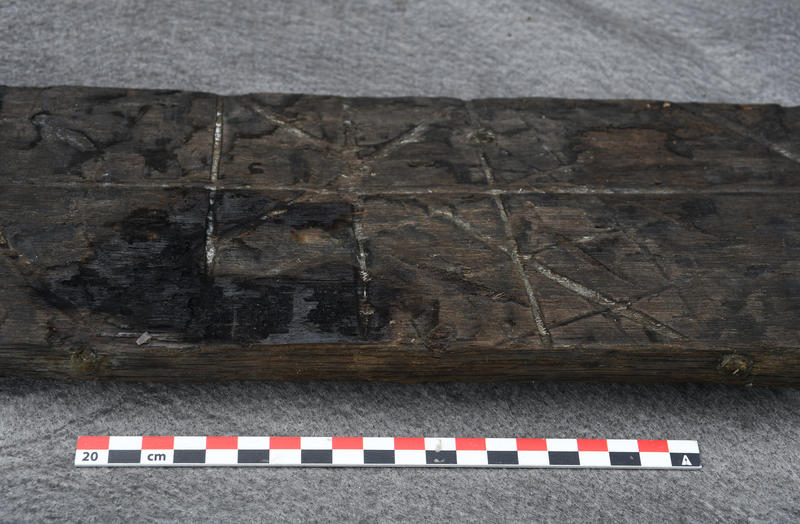- 1/1
Lost 16th Century cask lid found in Bjørvika this week. Photograph by Kristina Steen/Norsk Maritime Museum
Casks were the shipping containers of the past. They held wet and dry goods. Oak casks were more costly than pine casks, as oak itself was a sought after wood due to it’s necsesssity in the shipbuilding industry. Oak casks were made to last, they were used and reused and as such were a valued and valuable commodity.
The cask lid found in the cultural layers of Bjørvika this week has two remaining parts. Both are made of oak. Small dowels held the cask lid parts together. Cask lids could be made of one or many pieces. This particluar lid looks like it is missing one or two pieces. Two 2cm holes in the top show that this cask once held a liquid that someone wished to sample. A small 0,8 cm plugg shows that the cask was repaired at least once. The outer rim of the cask have been planed down to a sharp edge to fit into the croze (groove) of the barrel staves. The outside of the lid has some burn damage so the cask may have been cargo on a ship that caught fire. Or perhaps it sat waiting on the Bjørvika pier when that caught fire?
- 1/1
Small dowels held the lid parts together. Photograph by Kristina Steen/Norsk Maritime Museum
It is difficult to say with certainty what size this barrel would have been originally. Casks came in all shapes and sizes. Their volume varying from one country to another and even from one time period to another within the same country. We have found similarly sized oak cask lids on previous excavations in Bjørvika. They belonged to casks that had been cut in two and reused as buckets. The buckets held up to 77 litres of water. So it is probable that the cask this lid belonged to held at least 140 litres of liquid.
Tracing past seafaring through carvings and lines
Archaeological finds have shown that 16th century casks have travelled the world over. French casks from the sixteenth century have been found in Ireland (Drogheda Boat) and Canada (Red Bay). These casks probably contained wine originally but were then reused to carry herring and whale oil respectively. In the case of the casks found in Canada, they had been bought by Basque whalers, dismantled, shipped to Canada and reasembled as they were needed.
This cask lid we’ve just found has not yet been analysed to find out where it originated. Previous finds of 16th century casks in Bjørvika have originated in Scandinavia and Germany. But even without dendrochronoligical anayses it is possible to see that the cask has taken more than one journey. The lid is covered with scribed marks. Some are deep and broad while others are thin and worn. The deep, broad marks were probably made with a tool known as a timber scribe or a rase knife. These marks were proably made to denote the owner of the cask. The worn marks may have been made by previous owners. Some of the thin lines may have been made to show how the lid should be reassembled if it was taken apart. Lines might also have been scribed into the surface of the lid at toll checks, to show that all taxes had been paid and that nothing was being smuggled into the city.
- 1/1
Scribed marks on the lid. Photograph by Kristina Steen/Norsk Maritime Museum
Souces and further reading
Daly, Aoife, 2015 Dendrochronological analysis of boat and barrel parts found in association with Barcode ship 2 (BC02), from Barcode, Oslo. dendro.dk report 2015:16, Copenhagen.
Fawsitt, Sarah, 2010 Casks & 16th Century Trade in Northern Europe: A Study of the Cargo from the Drogheda Boat, (Unplublished master’s thesis). University of Southern Denmark. Denmark. http://norskmaritimtmuseum.academia.edu/SarahFawsitt
Quinn D.B., Quinn, A.M., &Hillier, S. 1979. Newfoundland from Fishery to Colony. Northwest Passage Searches. New York:Arno Press.



